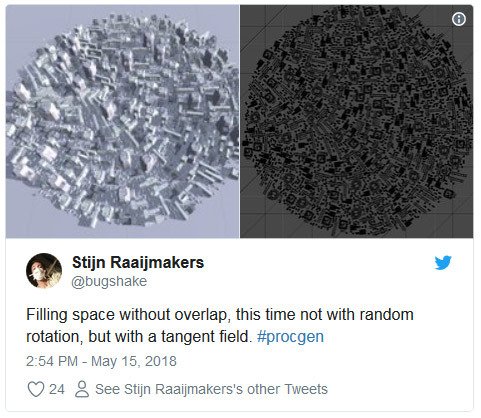
Space-filling tangent field
Sometimes, someone comes up with a technique that seems so obvious in retrospect that you wonder why you haven’t seen it before.
It’s not new (this ACM 2008 paper describes the technique) but if I’ve seen it before I didn’t remember it. Or maybe I just connected to the context in the right way this time.
So, what the heck is a tangent field and how can you use it to generate a city? A vector field is a field of vectors–that is, for each point in the space there is an arrow pointing in a direction, which can be shorter or longer. This should be fairly easy to understand if you’re already familiar with vectors: it’s just a bunch of vectors that each have a position in space. They can be useful for a lot of things, such as wind simulation, pathfinding, and crowd simulation.
A tangent field is a vector field on a surface, where the vectors are in tangent space–for a flat plane they’re lying flat on the ground. The city generator Stijn Raaijmakers made works by taking the weighted average angle (with the weight as 1/(r*r) where r is the distance to each tangent attractor) and generating a building there either along the tangent angle or perpendicular to it. This creates a densely packed space to sample from to give a degree of order to the placed buildings.
Packing problems come up quite a bit in procedural generation, especially where you’re trying to fill a space with content and don’t want any unsightly gaps. (There’s non-spatial applications of packing problems too, but we’ll leave that for another day.) Stijn’s generator reminded me that there’s a lot of useful research to draw on out there.
